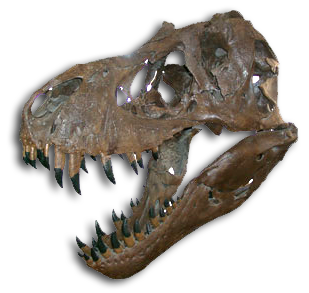Item Number
2083
Type
image
Description
Fern
Age
Paleozoic, Permian
SciId
Neuropteris
Status
in inventory
Display/Storage
Display
Building
Zuhl Museum
Original Site
Germany
Date Acquired
2014
Gallery/Room\Floor
Curator Office
Notes
Medullosans are a group of seed plants that are commonly, albeit incorrectly, called seed ferns. Medullosans produce seeds, not spores, and are more closely related to conifers and flowering plants than to ferns. This misnomer arose because the leaves of Medullosans are very similar to and often mistaken for the leaves of ferns. Medullosans lived all over the landscape during the Carboniferous and Permian periods. Some medullosans grew as trees, reaching about 33 feet (10 meters) tall, while others grew as vines, entwined around other plants. The tree-form is notable for having leaves that were up to 10 feet (3 meters) long. Medullosan seeds varied greatly in size from less than an inch to several inches in length, and the largest were among the biggest seeds recovered from the fossil record until the Cenozoic Era (over 150 million years later). Lowest Permian: 295-300 MYA Rotliegendes Formation Sobernheim, Pfalz, Germany
Preview

Description
Medullosans are a group of seed plants that are commonly, albeit incorrectly, called seed ferns. Medullosans produce seeds, not spores, and are more closely related to conifers and flowering plants than to ferns. This misnomer arose because the leaves of Medullosans are very similar to and often mistaken for the leaves of ferns. Medullosans lived all over the landscape during the Carboniferous and Permian periods. Some medullosans grew as trees, reaching about 33 feet (10 meters) tall, while others grew as vines, entwined around other plants. The tree-form is notable for having leaves that were up to 10 feet (3 meters) long. Medullosan seeds varied greatly in size from less than an inch to several inches in length, and the largest were among the biggest seeds recovered from the fossil record until the Cenozoic Era (over 150 million years later). Lowest Permian: 295-300 MYA Rotliegendes Formation Sobernheim, Pfalz, Germany 26x34
Keywords
Fern Medullosans are a group of seed plants that are commonly, albeit incorrectly, called seed ferns. Medullosans produce seeds, not spores, and are more closely related to conifers and flowering plants than to ferns. This misnomer arose because the leaves of Medullosans are very similar to and often mistaken for the leaves of ferns. Medullosans lived all over the landscape during the Carboniferous and Permian periods. Some medullosans grew as trees, reaching about 33 feet (10 meters) tall, while others grew as vines, entwined around other plants. The tree-form is notable for having leaves that were up to 10 feet (3 meters) long. Medullosan seeds varied greatly in size from less than an inch to several inches in length, and the largest were among the biggest seeds recovered from the fossil record until the Cenozoic Era (over 150 million years later). Lowest Permian: 295-300 MYA Rotliegendes Formation Sobernheim, Pfalz, Germany 2014 Paleozoic, Permian Fossil
Keywords
Fern Medullosans are a group of seed plants that are commonly, albeit incorrectly, called seed ferns. Medullosans produce seeds, not spores, and are more closely related to conifers and flowering plants than to ferns. This misnomer arose because the leaves of Medullosans are very similar to and often mistaken for the leaves of ferns. Medullosans lived all over the landscape during the Carboniferous and Permian periods. Some medullosans grew as trees, reaching about 33 feet (10 meters) tall, while others grew as vines, entwined around other plants. The tree-form is notable for having leaves that were up to 10 feet (3 meters) long. Medullosan seeds varied greatly in size from less than an inch to several inches in length, and the largest were among the biggest seeds recovered from the fossil record until the Cenozoic Era (over 150 million years later). Lowest Permian: 295-300 MYA Rotliegendes Formation Sobernheim, Pfalz, Germany 2014 Paleozoic, Permian Fossil


